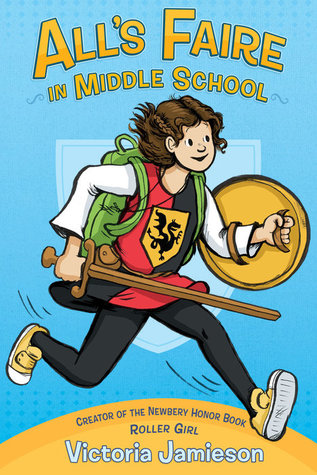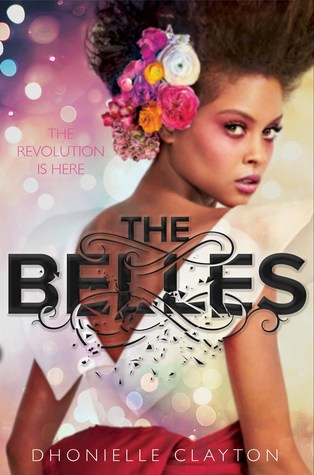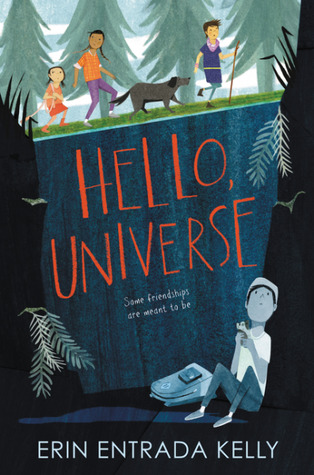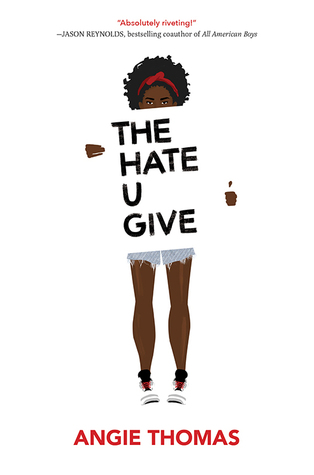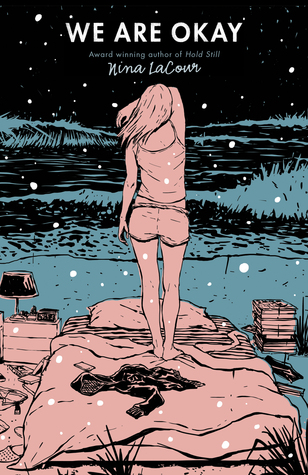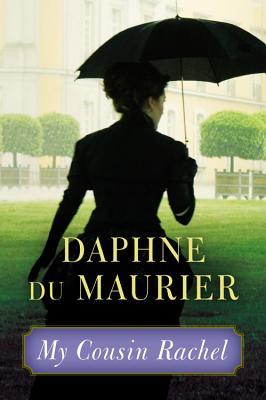I wanted to post a book list of books from a variety of genres and
reading levels in celebration of Black History Month. I've
read quite a few of these titles and others are on my ever-growing to
be read pile. This is by no means a comprehensive list. There are
hundreds of titles out there to choose from. All of these titles are
either feature Black and/or African characters and/or are written by own voices authors from these backgrounds. If I have reviewed the book, I will link my
review.
Children's Picture Books
Crown: An Ode to a Fresh Cut by Derrick Barnes:
The barbershop is where
the magic happens. Boys go in as lumps of clay and, with princely robes
draped around their shoulders, a dab of cool shaving cream on their
foreheads, and a slow, steady cut, they become royalty. That crisp yet
subtle line makes boys sharper, more visible, more aware of every great
thing that could happen to them when they look good: lesser grades turn
into As; girls take notice; even a mother’s hug gets a little tighter.
Everyone notices. A fresh cut makes boys fly.
Jabari Jumps by Gaia Cornwall:
Jabari is definitely ready to jump off the diving board. He's finished his swimming lessons and passed his swim test, and he's a great jumper, so he's not scared at all. "Looks easy," says Jabari, watching the other kids take their turns. But when his dad squeezes his hand, Jabari squeezes back. He needs to figure out what kind of special jump to do anyway, and he should probably do some stretches before climbing up onto the diving board.
In Your Hands by Carole Boston Weatherford:
A black mother expresses the many hopes and dreams she has for her child in this powerful picture book.
Hey Black Child by
Useni Eugene Perkins: This lyrical,
empowering poem celebrates black children and seeks to inspire all young
people to dream big and achieve their goals.
Children/Middle Grade Reads
Ghost by Jason Reynolds:
Running. That's all
that Ghost (real name Castle Cranshaw) has ever known. But never for a
track team. Nope, his game has always been ball. But when Ghost
impulsively challenges an elite sprinter to a race -- and wins -- the
Olympic medalist track coach sees he has something: crazy natural
talent. Thing is, Ghost has something else: a lot of anger, and a past
that he is trying to outrun. Can Ghost harness his raw talent for speed
and meld with the team, or will his past finally catch up to him?
The Crossover by Kwame Alexander:
Josh and Jordan must
come to grips with growing up on and off the court to realize breaking
the rules comes at a terrible price, as their story's heart-stopping
climax proves a game-changer for the entire family.
After Tupac and D Foster by Jacqueline Woodson: The day D Foster
enters Neeka and her best friend’s lives, the world opens up for them. D
comes from a world vastly different from their safe Queens
neighborhood, and through her, the girls see another side of life that
includes loss, foster families and an amount of freedom that makes the
girls envious. Although all of them are crazy about Tupac Shakur’s rap
music, D is the one who truly understands the place where he’s coming
from, and through knowing D, Tupac’s lyrics become more personal for all
of them.
Stella by Starlight by Sharon Draper:
Stella lives in the
segregated South; in Bumblebee, North Carolina, to be exact about it.
Some stores she can go into. Some stores she can't. Some folks are right
pleasant. Others are a lot less so. To Stella, it sort of evens out,
and heck, the Klan hasn't bothered them for years. But one late night,
later than she should ever be up, much less wandering around outside,
Stella and her little brother see something they're never supposed to
see, something that is the first flicker of change to come, unwelcome
change by any stretch of the imagination. As Stella's community - her
world - is upended, she decides to fight fire with fire. And she learns
that ashes don't necessarily signify an end.
Princeless series by Jeremy Whitley:
Adrienne Ashe never
wanted to be a princess. She hates fancy dinners, is uncomfortable in
lavish dresses, and has never wanted to wait on someone else to save
her. However, on the night of her 16th-birthday, her parents, the King
and Queen, locked her away in a tower guarded by a dragon to await the
rescue of some handsome prince. Now Adrienne has decided to take matters
into her own hands!
One Crazy Summer by Rita Williams Garcia:
In the summer of 1968,
after travelling from Brooklyn to Oakland, California, to spend a month
with the mother they barely know, eleven-year-old Delphine and her two
younger sisters arrive to a cold welcome as they discover that their
mother, a dedicated poet and printer, is resentful of the intrusion of
their visit and wants them to attend a nearby Black Panther summer camp.
The Stars Beneath Our Feet by David Barclay Moore:
It's Christmas Eve in
Harlem, but twelve-year-old Lolly Rachpaul and his mom aren't
celebrating. They're still reeling from his older brother's death in a
gang-related shooting just a few months earlier. Then Lolly's mother's
girlfriend brings him a gift that will change everything: two enormous
bags filled with Legos. Lolly's always loved Legos, and he prides
himself on following the kit instructions exactly. Now, faced with a
pile of building blocks and no instructions, Lolly must find his own way
forward.
His path isn't clear--and the pressure to join a "crew,"
as his brother did, is always there. When Lolly and his friend are
beaten up and robbed, joining a crew almost seems like the safe choice.
But building a fantastical Lego city at the community center provides
Lolly with an escape--and an unexpected bridge back to the world.
YA
The Hate U Give by Angie Thomas: Starr Carter moves
between two worlds: the poor neighborhood where she lives and the fancy
suburban prep school she attends. The uneasy balance between these
worlds is shattered when Starr witnesses the fatal shooting of her
childhood best friend Khalil at the hands of a police officer. Khalil
was unarmed.
Soon afterward, his death is a national headline.
Some are calling him a thug, maybe even a drug dealer and a gangbanger.
Protesters are taking to the streets in Khalil's name. Some cops and the
local drug lord try to intimidate Starr and her family. What everyone
wants to know is: what really went down that night? And the only person alive who can answer that is Starr. But what Starr does or does not say could upend her community. It could also endanger her life.
Dear Martin by Nic Stone:
Justyce McAllister is
top of his class and set for the Ivy League—but none of that matters to
the police officer who just put him in handcuffs. And despite leaving
his rough neighborhood behind, he can't escape the scorn of his former
peers or the ridicule of his new classmates. Justyce looks to the
teachings of Dr. Martin Luther King Jr. for answers. But do they hold up
anymore? He starts a journal to Dr. King to find out.
Then comes
the day Justyce goes driving with his best friend, Manny, windows
rolled down, music turned up—way up, sparking the fury of a white
off-duty cop beside them. Words fly. Shots are fired. Justyce and Manny
are caught in the crosshairs. In the media fallout, it's Justyce who is
under attack.
Long Way Down by Jason Reynolds:
Shawn was just
murdered. And Will knows the rules. No crying. No snitching. Revenge.
That’s where Will’s now heading, with that gun shoved in the back
waistband of his jeans, the gun that was his brother’s gun. He gets on
the elevator, seventh floor, stoked. He knows who he’s after. Or does
he?
The Belles by Dhonelle Clayton: Camellia Beauregard is a
Belle. In the opulent world of Orléans, Belles are revered, for they
control Beauty, and Beauty is a commodity coveted above all else. In
Orléans, the people are born gray, they are born damned, and only with
the help of a Belle and her talents can they transform and be made
beautiful.
But it’s not enough for Camellia to be just a Belle.
She wants to be the favorite—the Belle chosen by the Queen of Orléans to
live in the royal palace, to tend to the royal family and their court,
to be recognized as the most talented Belle in the land. But once
Camellia and her Belle sisters arrive at court, it becomes clear that
being the favorite is not everything she always dreamed it would be.
Behind the gilded palace walls live dark secrets, and Camellia soon
learns that the very essence of her existence is a lie—that her powers
are far greater, and could be more dangerous, than she ever imagined.
And when the queen asks Camellia to risk her own life and help the
ailing princess by using Belle powers in unintended ways, Camellia now
faces an impossible decision.
Allegedly by Tiffany Jackson:
Mary B. Addison killed a baby. Allegedly.
She didn’t say much in that first interview with detectives, and the
media filled in the only blanks that mattered: A white baby had died
while under the care of a churchgoing black woman and her nine-year-old
daughter. The public convicted Mary and the jury made it official. But
did she do it? She wouldn’t say. Mary survived six years in baby
jail before being dumped in a group home. The house isn’t really
“home”—no place where you fear for your life can be considered a home.
Home is Ted, who she meets on assignment at a nursing home.
There
wasn’t a point to setting the record straight before, but now she’s got
Ted—and their unborn child—to think about. When the state threatens to
take her baby, Mary must find the voice to fight her past. And her fate
lies in the hands of the one person she distrusts the most: her Momma.
No one knows the real Momma. But who really knows the real Mary?
American Street by Ibi Zoboi:
On the corner of American Street and Joy Road, Fabiola Toussaint thought she would finally find une belle vie—a good life. But
after they leave Port-au-Prince, Haiti, Fabiola’s mother is detained by
U.S. immigration, leaving Fabiola to navigate her loud American
cousins, Chantal, Donna, and Princess; the grittiness of Detroit’s west
side; a new school; and a surprising romance, all on her own.
Just
as she finds her footing in this strange new world, a dangerous
proposition presents itself, and Fabiola soon realizes that freedom
comes at a cost. Trapped at the crossroads of an impossible choice, will
she pay the price for the American dream?
Beasts Made of Night by Tochi Onyebuchi: In the walled city of
Kos, corrupt mages can magically call forth sin from a sinner in the
form of sin-beasts – lethal creatures spawned from feelings of guilt.
Taj
is the most talented of the aki, young sin-eaters indentured by the
mages to slay the sin-beasts. But Taj’s livelihood comes at a terrible
cost. When he kills a sin-beast, a tattoo of the beast appears on his
skin while the guilt of committing the sin appears on his mind. Most aki
are driven mad by the process, but 17-year-old Taj is cocky and
desperate to provide for his family. When Taj is called to eat a
sin of a royal, he’s suddenly thrust into the center of a dark
conspiracy to destroy Kos. Now Taj must fight to save the princess that
he loves – and his own life.
Noughts and Crosses by Majorie Blackman: Sephy is a Cross -- a
member of the dark-skinned ruling class. Callum is a Nought -- a
“colourless” member of the underclass who were once slaves to the
Crosses. The two have been friends since early childhood, but that’s as
far as it can go. In their world, Noughts and Crosses simply don’t mix.
Against a background of prejudice and distrust, intensely highlighted by
violent terrorist activity, a romance builds between Sephy and Callum
-- a romance that is to lead both of them into terrible danger. Can they
possibly find a way to be together?
I Am Alfonso Jones by Tony Medina: Alfonso Jones can’t
wait to play the role of Hamlet in his school’s hip-hop rendition of the
classic Shakespearean play. He also wants to let his best friend,
Danetta, know how he really feels about her. But as he is buying his
first suit, an off-duty police officer mistakes a clothes hanger for a
gun, and he shoots Alfonso.
When Alfonso wakes up in the
afterlife, he’s on a ghost train guided by well-known victims of police
shootings, who teach him what he needs to know about this subterranean
spiritual world. Meanwhile, Alfonso’s family and friends struggle with
their grief and seek justice for Alfonso in the streets. As they
confront their new realities, both Alfonso and those he loves realize
the work that lies ahead in the fight for justice.
Piecing Me Together by Renee Watson: Jade believes she must
get out of her neighborhood if she’s ever going to succeed. Her mother
says she has to take every opportunity. She has. She accepted a
scholarship to a mostly-white private school and even Saturday morning
test prep opportunities. But some opportunities feel more demeaning than
helpful. Like an invitation to join Women to Women, a mentorship
program for “at-risk” girls. Except really, it’s for black girls. From
“bad” neighborhoods.
But Jade doesn’t need support. And just
because her mentor is black doesn’t mean she understands Jade. And maybe
there are some things Jade could show these successful women about the
real world and finding ways to make a real difference.
Nonfiction
Between the World and Me by
Ta-Nehisi Coates: In a profound work that
pivots from the biggest questions about American history and ideals to
the most intimate concerns of a father for his son, Ta-Nehisi Coates
offers a powerful new framework for understanding our nation’s history
and current crisis. Americans have built an empire on the idea of
“race,” a falsehood that damages us all but falls most heavily on the
bodies of black women and men—bodies exploited through slavery and
segregation, and, today, threatened, locked up, and murdered out of all
proportion. What is it like to inhabit a black body and find a way to
live within it? And how can we all honestly reckon with this fraught
history and free ourselves from its burden?
The Other Wes Moore by Wes Moore:
Two kids with the
same name lived in the same decaying city. One went on to be a Rhodes
Scholar, decorated combat veteran, White House Fellow, and business
leader. The other is serving a life sentence in prison. Here is the
story of two boys and the journey of a generation.
Rest in Power: The Enduring Life of Trayvon Martin by Sybrina Fulton and Tracy Martin:
Five years after his
tragic death, Travyon Martin's name is still evoked every day. He has
become a symbol of social justice activism, as has his hauntingly
familiar image: the photo of a child still in the process of becoming a
young man, wearing a hoodie and gazing silently at the camera. But who
was Trayvon Martin, before he became, in death, an icon? And how did one
black child s death on a dark, rainy street in a small Florida town
become the match that lit a civil rights crusade?
Rest in Power, told
through the compelling alternating narratives of Sybrina Fulton and
Tracy Martin, answers, for the first time, those questions from the most
intimate of sources. It s the story of the beautiful and complex child
they lost, the cruel unresponsiveness of the police and the hostility of
the legal system, and the inspiring journey they took from grief and
pain to power, and from tragedy and senselessness to meaning.
Brown Girl Dreaming by Jacqueline Woodson:
Raised in South
Carolina and New York, Woodson always felt halfway home in each place.
In vivid poems, she shares what it was like to grow up as an African
American in the 1960s and 1970s, living with the remnants of Jim Crow
and her growing awareness of the Civil Rights movement. Touching and
powerful, each poem is both accessible and emotionally charged, each
line a glimpse into a child’s soul as she searches for her place in the
world. Woodson’s eloquent poetry also reflects the joy of finding her
voice through writing stories, despite the fact that she struggled with
reading as a child. Her love of stories inspired her and stayed with
her, creating the first sparks of the gifted writer she was to become.
Little Leaders: Bold Women in Black History by Vashti Harrison:
Featuring forty trailblazing black women in American history, Little Leaders
educates and inspires as it relates true stories of breaking boundaries
and achieving beyond expectations. Illuminating text paired with
irresistible illustrations bring to life both iconic and lesser-known
female figures of Black history.
March series by John Lewis:
Congressman John Lewis
(GA-5) is an American icon, one of the key figures of the civil rights
movement. His commitment to justice and nonviolence has taken him from
an Alabama sharecropper’s farm to the halls of Congress, from a
segregated schoolroom to the 1963 March on Washington, and from
receiving beatings from state troopers to receiving the Medal of Freedom
from the first African-American president.
Adult Fiction
Their Eyes Were Watching God by
Zora Neale Hurston:
Fair and long-legged,
independent and articulate, Janie Crawford sets out to be her own person
-- no mean feat for a black woman in the '30s. Janie's quest for
identity takes her through three marriages and into a journey back to
her roots.
Sing, Unburied, Sing by Jesamyn Ward:
An intimate portrait of a family and an epic tale of hope and struggle, Sing, Unburied, Sing examines the ugly truths at the heart of the American story and the power – and limitations – of family bonds.
Behold the Dreamers by Imbolo Mbue:
Jende Jonga, a
Cameroonian immigrant living in Harlem, has come to the United States to
provide a better life for himself, his wife, Neni, and their
six-year-old son. In the fall of 2007, Jende can hardly believe his luck
when he lands a job as a chauffeur for Clark Edwards, a senior
executive at Lehman Brothers. Clark demands punctuality, discretion, and
loyalty—and Jende is eager to please. Clark’s wife, Cindy, even offers
Neni temporary work at the Edwardses’ summer home in the Hamptons. With
these opportunities, Jende and Neni can at last gain a foothold in
America and imagine a brighter future. However, the world of
great power and privilege conceals troubling secrets, and soon Jende and
Neni notice cracks in their employers’ façades.
When the
financial world is rocked by the collapse of Lehman Brothers, the Jongas
are desperate to keep Jende’s job—even as their marriage threatens to
fall apart. As all four lives are dramatically upended, Jende and Neni
are forced to make an impossible choice.
The Underground Railroad by Colson Whitehead: In Whitehead's
ingenious conception, the Underground Railroad is no mere metaphor -
engineers and conductors operate a secret network of tracks and tunnels
beneath the Southern soil. Cora and Caesar's first stop is South
Carolina, in a city that initially seems like a haven - but the city's
placid surface masks an insidious scheme designed for its black
denizens. Even worse: Ridgeway, the relentless slave catcher, is close
on their heels. Forced to flee again, Cora embarks on a harrowing
flight, state by state, seeking true freedom.
Home Going by Yaa Gyasi:
Two half-sisters, Effia
and Esi, are born into different villages in eighteenth-century Ghana.
Effia is married off to an Englishman and lives in comfort in the
palatial rooms of Cape Coast Castle. Unbeknownst to Effia, her sister,
Esi, is imprisoned beneath her in the castle's dungeons, sold with
thousands of others into the Gold Coast's booming slave trade, and
shipped off to America, where her children and grandchildren will be
raised in slavery. One thread of Homegoing follows Effia's
descendants through centuries of warfare in Ghana, as the Fante and
Asante nations wrestle with the slave trade and British colonization.
The other thread follows Esi and her children into America. From the
plantations of the South to the Civil War and the Great Migration, from
the coal mines of Pratt City, Alabama, to the jazz clubs and dope houses
of twentieth-century Harlem, right up through the present day, Homegoing
makes history visceral, and captures, with singular and stunning
immediacy, how the memory of captivity came to be inscribed in the soul
of a nation.
Kindred by Octavia Butler:
Having just celebrated
her 26th birthday in 1976 California, Dana, an African-American woman,
is suddenly and inexplicably wrenched through time into antebellum
Maryland. After saving a drowning white boy there, she finds herself
staring into the barrel of a shotgun and is transported back to the
present just in time to save her life. During numerous such time-defying
episodes with the same young man, she realizes the challenge she’s been
given: to protect this young slaveholder until he can father her own
great-grandmother.


